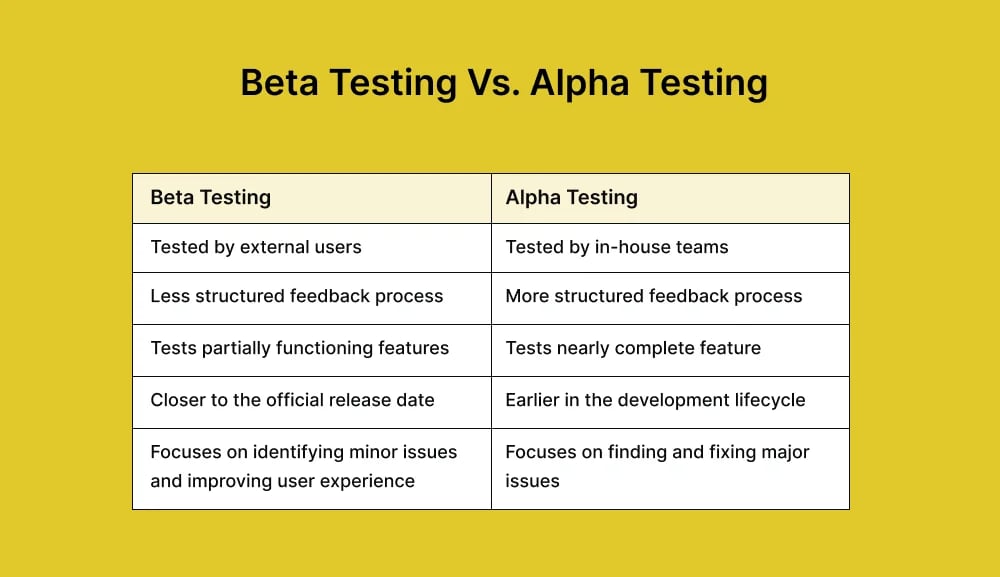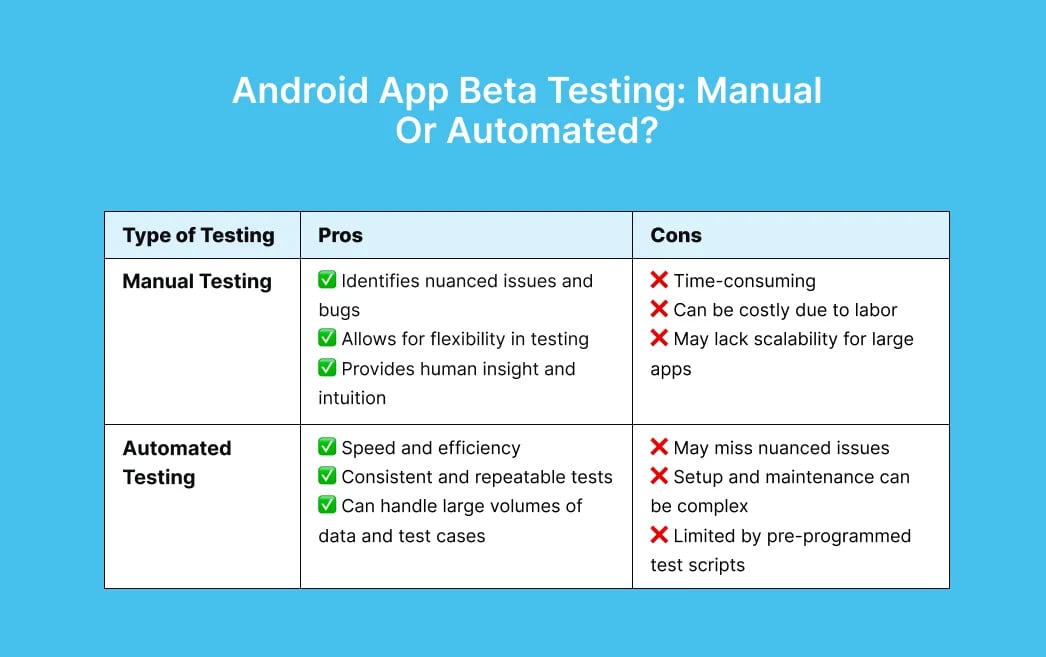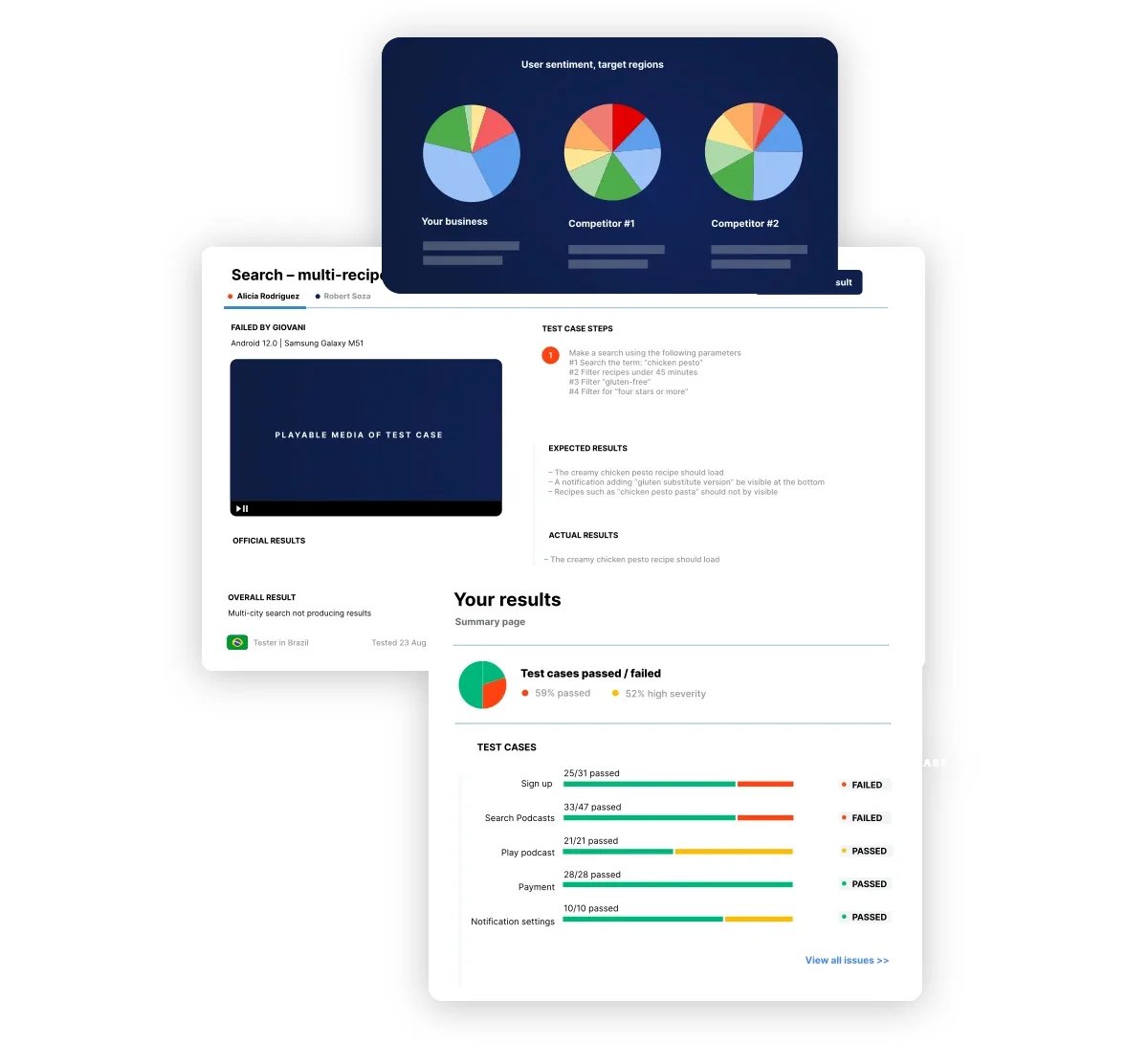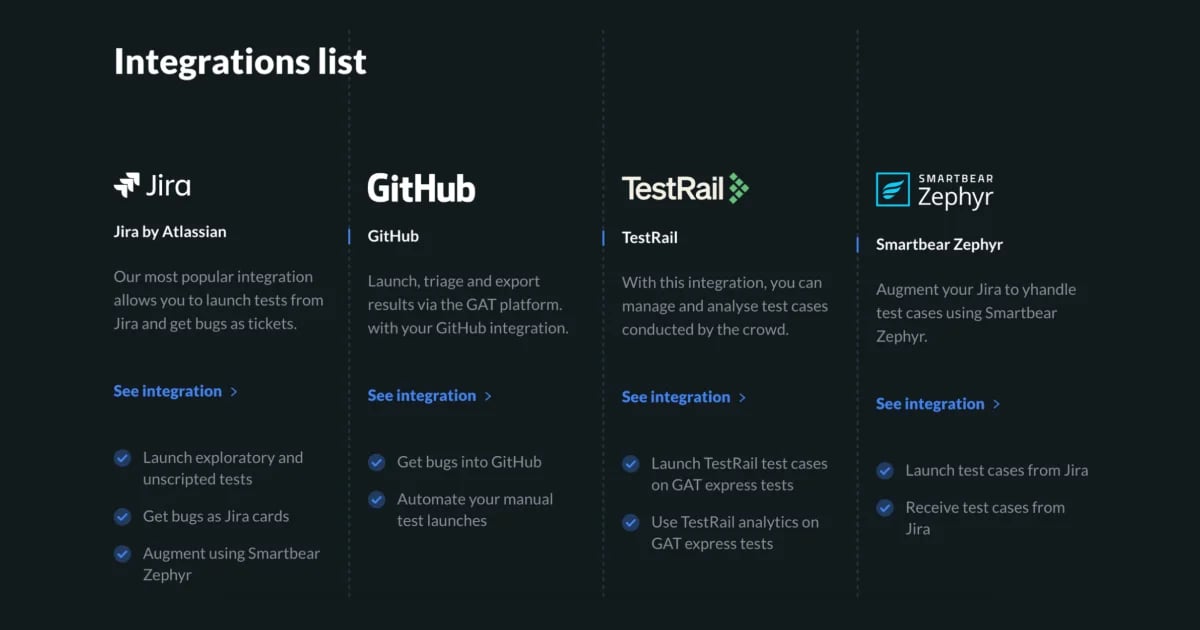Android app beta testing - definitive guide
Launching your app is a significant achievement in the development process, but it doesn't mark the end of the journey. While other types of testing are essential, they may not capture the full range of real-world usage scenarios. That's where beta testing comes in, providing a reality check before your app goes live. Beta testing lets your Android app be used in various conditions and on various devices, revealing issues that might not have been evident during early testing. Let's go through a detailed guide to Android app beta testing!
We can help you drive Android app beta testing as a key initiative aligned to your business goals
What is Android App beta testing?
Android app beta testing involves testing a pre-release version of an Android app by a group of users/testers before it is officially released to the public. Beta testing aims to identify and fix bugs, get feedback on features, and improve overall app performance. It also helps developers ensure that their app is ready for the market and that users have a positive experience when they use the app.
When should you use Beta testing for the Android app?
It would help if you used beta testing for an Android app to test its performance, functionality, and user experience before its official release. Here is when you should use it:
- To detect and fix issues and bugs before the app launch.
- Get feedback from real users and adjust the app according to their needs and concerns.
- Ensure the app meets quality standards and expectations.
- Builds anticipation for the launch by involving potential users in its development.
Android app beta testing types
Android App Beta testing types can be broadly categorized into five different types. These are:
- Open beta testing: Allows anyone interested in the app to participate in the testing phase. The goal is to get feedback from a large and diverse group of users.
- Closed beta testing: The app is only available to a specific group of users the company has selected. These users are often asked to sign non-disclosure agreements (NDAs) to maintain confidentiality.
- Technical beta testing: This type of testing focuses on testing the app's technical capabilities, such as its speed, performance, and stability. Developers and QA testers usually do this type of testing.
- Focused beta testing: This type of testing focuses on a specific feature or set of features of the app and is designed to get feedback about those features from a select group of users.
- Post-release beta testing: This is done after the app has been released to the public. The goal is to continue testing the app and fixing any issues that may arise.
Beta testing vs. Alpha testing
Here are a few key differences between the two types of testing:
- Alpha testing typically uses in-house developers and testers, while beta testing is conducted with external users.
- Alpha testing is generally a more controlled process, with more structured test plans and feedback loops. Beta testing, on the other hand, is less structured and often involves crowdsourced feedback.
- Alpha testing usually uses a nearly complete software version, while beta testing often involves testing incomplete or partially functioning features.
- Alpha testing is typically done earlier in the software development lifecycle. In contrast, beta testing occurs later, closer to the official release date.
- Alpha testing is focused on finding and fixing major issues. In contrast, beta testing focuses on identifying minor issues and improving the overall user experience.

Why should you Beta test Android apps?
Beta testing an Android app can provide several benefits, including:
- Identifying and fixing issues: Users can find and report bugs, crashes, and other issues that may have been missed during internal testing and development.
- Getting feedback from real users: Developers can gather feedback, covering technical issues, likes, dislikes, and suggestions for improvement.
- Enhancing user experience: Insights from how users interact with the app help identify areas for enhancement, resulting in a better overall experience.
- Building anticipation: Involving potential users can create excitement about the app and boost interest and adoption when it is released.
- Ensuring app quality: Testing helps ensure the app meets users' expectations, which can increase satisfaction and reduce negative reviews.
How do you perform beta testing on the Android app?
Let’s go through each step of beta testing on the Android app.
1. Set clear objectives
Setting clear goals helps developers test the app's most important features. Clear objectives help developers decide who will test the app, which features to focus on, and how long the test will last. These objectives let developers measure the app's performance against set standards. Focusing on specific bugs and past issues helps developers see if the app is ready for review. This approach also helps improve the app by targeting specific feedback areas.
2. Select beta testers
Choosing the right people to test your Android app is important for getting good feedback and making the testing process successful. Aim to recruit testers who match your app's target audience to gather useful insights from real customers. Testing on different devices helps ensure compatibility across various platforms and screen sizes. Testers with different levels of technical skill can offer feedback on possible compatibility or usability problems. It's also crucial to pick testers who can give detailed feedback consistently and stay engaged in the testing process.
3. Prepare and distribute the app’s beta version
A thorough preparation process includes:
- Checking for possible security or compatibility problems.
- Setting clear testing guidelines.
- Choosing the right distribution methods.
- Make sure potential testers know about the test.
- Setting a deadline.
Good preparation and distribution help maximize productivity during testing and ensure developers receive timely feedback to improve the app and meet customer expectations.
4. Provide instructions
Instructions should specify which app features to test, known issues to watch for, how to report bugs, and what feedback to give. Make instructions clear and understandable so testers can provide prompt, precise feedback. Send instructions through channels like email or messaging apps and provide detailed guides if necessary.
5. Collect feedback
Gathering feedback from beta testers helps developers spot and fix problems before the app's official launch. It can also uncover user preferences and expectations, guiding improvements to the app. Encouraging honest and detailed feedback helps create a better user experience for everyone.
6. Monitor test progress
Tracking test progress helps ensure issues are found and fixed quickly. Regularly checking app performance during beta testing allows the development team to respond to user feedback and solve any problems. This includes gathering data on how users use the app, watching for crashes or errors, and talking to testers to get their feedback.
8. Iterate and update
Updating the app based on beta testers' feedback is crucial. This involves addressing users' concerns, improving app features, fixing bugs, and enhancing functionality. Developers can create an app that meets users' needs and expectations by iterating and updating the app according to user feedback, making it competitive in the Android app market.
9. Communicate with testers
Staying in contact with beta testers allows developers to get feedback on the app's performance, interface, and features. This feedback helps developers fix problems and make updates to improve the app and the user experience. Open and active communication with testers informs them about app changes or updates. Developers can also use this communication to offer guidelines and instructions for using the app, leading to higher quality and more precise feedback from beta testers.
10. Conclude testing
Finishing beta testing involves reviewing testers' feedback and making needed app changes. This might include fixing bugs, improving performance, enhancing features, and refining the interface. After these changes, the app is ready for public release. Before launching, it's crucial to conduct final testing to ensure any bugs or issues have been entirely resolved.
11. Finalize the app
Finalizing the app means making the last changes based on feedback from beta testers. This includes fixing any remaining bugs, improving performance, polishing the interface, and enhancing features. Once the app is ready, it can be released to the public. Developers must thoroughly test all parts of the app before release to prevent any issues that could harm the user experience.
Android app beta testing: Manual or Automated?
Deciding between manual and automated testing is crucial for Android app beta testing. Manual testing uses human testers and real devices to find issues and bugs. In contrast, automated testing uses software to handle the process. Both have advantages and drawbacks:

The choice depends on the app's complexity, the testing team's size, and available resources. Combining both methods may provide the most thorough testing for an Android app.
How can Global App Testing leverage your Android app beta testing?
Global App Testing is a crowdsourced testing platform that offers real-device testing services across 190+ countries and territories. We provide various types of testing while backed up by the highest worldwide security standards, including ISO 27001 Certification 2023 and Amazon Web Services, which includes ACIPA SOC 2, ISO 27001, and ISO 27017 certified hosting provider designation. Here are some additional benefits you can expect if you choose us:
- Wide testing coverage: Global App Testing offers access to a large, diverse pool of testers from around the world. This enables your app to be tested across various devices, network conditions, and cultural contexts, ensuring broad compatibility and uncovering issues that might arise in different regions.
- Expert testers: The platform employs experienced testers who understand how to perform thorough testing and provide detailed, actionable feedback. This expertise can lead to the discovery of nuanced issues and potential improvements.
- Rapid feedback loop: Global App Testing provides a quick turnaround on testing, allowing you to receive and act on feedback more promptly. This accelerates the iteration process and helps you improve your app in real time.
- Customized test plans: The platform allows you to create custom test plans tailored to your app's specific needs, such as targeting particular features, devices, or user groups. This flexibility ensures your app is tested in ways that align with your goals.
- Scalable testing: Whether you need a small number of testers for specific feedback or a large group for broad testing, Global App Testing can scale to match your requirements.
- Advanced reporting: The platform provides comprehensive reports on testing outcomes, including bug reports and performance metrics. These insights help guide your development process and help you make informed decisions.

- Integrations: Global App Testing offers integration features that enable efficient communication and coordination between your development team and testers.

To learn more about how we can leverage your Android app Beta testing, schedule a call with our specialist today!
We can help you drive Android app beta testing as a key initiative aligned to your business goals
Keep learning
7 beta testing tools to consider
5 Beta testing iOS apps to help you build functional products
What is Automation Testing? - Everything You Need To Know

